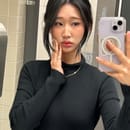If you’ve been lurking anywhere on social media these days, you probably know about the situation with the new reboot of the beloved show “Scooby-Doo, Where Are You!”, titled “Velma.” Written and created by Mindy Kaling, this new reimagining of the cast focuses on a teenage Velma Dinkley, who is canonically South Asian-American and LGBTQ+. Alongside Velma, we see the rest of the Mystery Gang with their new “makeovers,” including a black Shaggy, now going by his real name Norville, an East Asian Daphne, who is also canonically WLW, and a misogynistic Fred.
With a record-breaking overall rating of 1.3 stars on IMDb as of January 27, 2023, “Velma” has become the worst-rated show on the site after only airing for a little over two weeks. The percentage on Rotten Tomatoes is only slightly higher, with 2 stars and 44% tomatoes.
Now, to focus on the question everyone is asking: Why is it so bad?
Though there are certain people who have stated their approval of the show, the overwhelming majority of the audience has given it a gigantic thumbs-down. Jinkies!
To break it down, most of the criticism can be divided into four categories: characterization, sexuality, race, and Mindy Kaling herself. To be fair, the topics of sexuality and race, as well as the issues with Kaling could also fit under characterization—and said characterization was overseen by Kaling, as creator of the show, but to make things simple, we will call these categories separate.
- Not My Mystery Gang!
Unsurprisingly, people are mad about the new personalities that these characters seem to have taken on. Though there are definitely people that consider the race and sexuality changes to play a part in this, that is not the only issue.
In most of the previous content containing the gang, we see Fred Jones as the happy, lovable, and well-meaning leader of the group. He’s a goofy, unassuming character that cares deeply for his friends and family. In the new series, however, he is painted to be a mean, “dimwitted” popular guy who is shockingly misogynistic and hateful. Fred’s fan-given status as the himbo of the “Scooby-Doo” series is well known in and out of the fandom, and the removal of his core personality traits has shaken fans to their core. The bad receival of Fred’s remade character also points towards the race and sexuality not being a part of the problem, as he was the only character to keep his original race. His character also seems to look the most similar to older models, keeping his signature blonde quiff and preppy outfit of white, blue, and orange. Unfortunately, the nostalgia of his comfortingly familiar style was not enough to distract viewers from his violent personality change.
Daphne Blake: a fashionista at heart, and a gorgeous, confident person who loves her friends fiercely. We do see more of Daphne’s original personality peek through than we do with Fred, though there are some pretty drastic changes to her character too. Physically, she is portrayed as East Asian-American, though she retains her classic bright orange hair and similar styling of lime green and purple—though slightly modernized. However, in this reboot, Daphne is said to be Velma’s old best friend, before she turned into a stereotypical mean popular girl, but there’s a pretty surprising plot twist: she has romantic feelings for Velma, and this may have had some part in their broken friendship. Also unlike other portrayals of her character, she has two moms and is adopted, whereas in other versions of Scooby-Doo, such as “Scooby-Doo! Mystery Incorporated,” she has multiple sisters who look identical to her and a mother and father—who also have a striking resemblance to her. Daphne is also a notorious drug dealer in this version, and seems to be quite dependent on said drugs. It is speculated by viewers that the creators made Daphne the drug dealer instead of Shaggy, despite the latter’s fan-assigned title of a stoner, due to the race change—as it would likely feed into the harmful stigma of black people dealing drugs as well as possibly fueling the “model minority” stereotype for East Asians.
Speaking of Shaggy, he goes by his real name in “Velma”, which is a first for the character. Norville Rogers is said to be biracial, and he also repeatedly states how much he hates drugs, a stark contrast to Daphne, who is an avid drug dealer and user in the show. Much unlike the original Shaggy, Norville’s personality is much less jumpy and cowardly, and some state that the only real resemblance Norville has to his original character is his large appetite. Even this is toned down, especially with the absence of his best friend and dog, Scooby-Doo himself. Norville also has a crush on Velma, and though there are other adaptations of the gang where Velma and Shaggy are together or have crushes on each other, there have been multiple criticisms about Norville’s feelings as well as Velma’s towards other characters.
Velma Dinkley herself seems to have undergone plenty of changes, from her physical appearance to her personality. As previously stated, Velma is portrayed as South Asian-American, specifically Indian, and is bisexual, as seen when it comes to her complicated relationship with Daphne. Though Velma retains her “nerdy” core traits, she is much more spiteful and judgemental in this new reboot, especially towards the more popular kids at her high school, like Daphne and Fred. It’s stated that Velma’s love for mysteries comes from her mother, who is missing, ironically due to her investigating a mystery, which is also a difference from other versions of the show.
And of course: Scooby-Doo the Great Dane is not included in the show at all.
- Sexuality and Sexualization
It’s not uncommon for popular shows to portray teenagers, specifically high schoolers, as hypersexual beings. Shows like “Euphoria”, “Sex Education”, and “Riverdale” are quite popular despite the number of episodes in which teens engage in sexual activities on-screen. Even though sex and exploring your bodies at that age is normal, each show mentioned has been a topic of debate, wondering whether such graphic scenes could be more detrimental than liberating.
The gang are all fifteen years old in “Velma”, which is one thing that didn’t change from previous versions of their characters. However, unlike other versions, the pilot episode of “Velma” includes a locker room scene in which multiple teenage girls have nothing more than soap bubbles covering their breasts and crotches.
Some see the scene as self-aware and satirical, especially with the opening line being, “Discussion topic of the day! Do you ever notice how pilot episodes of TV shows always have more gratuitous sex and nudity than the rest of the series?” spoken by Daphne herself. But others say this self-awareness only makes it worse: if they’re aware perverts profit off of said scenes, why include them? It defeats the purpose of being self-aware. In the same scene, Krista, the girl that Daphne is fighting, states that “it would be hot if you two [Daphne and Velma] kissed.” Even referencing “Riverdale” when it comes to steamy kissing in TV shows, it’s an interesting insertion of foreshadowing in terms of Daphne and Velma’s repressed feelings for one another. Velma, though canonically bisexual in other versions of Scooby-Doo, has never been romantically interested in Daphne before. And Daphne herself has never been canonically into women.
However, “Velma” is much more conservative than other popular shows like “Big Mouth.” Either way, one wonders if it would be more beneficial to cut the nudity and listen to their own attempts at satire!
Though some find the openness about sexuality and the feelings between Daphne and Velma to be unnecessary, it is also seen as a nod to the recent confirmation Velma is a lesbian in “Mystery Incorporated.” But again, some argue Velma’s crush on Fred in “Velma” again defeats the purpose of including her relationship with Daphne regardless, and a poor attempt at inclusivity.
- Racebending… Done Right?
A large part of the controversy surrounding “Velma” revolves around the fact that three of the four main characters are now people of color, when they have been nothing other than white in every other version of “Scooby-Doo.”
Some say there was no reason for the characters to be black and Asian, as that had little effect on the plot or any other part of the show. On the other hand, this is a good thing: not every non-white character’s personality has to revolve around their race or culture.
But if there was really no difference when changing their race, why waste your time changing it at all? Instead, why not create new shows with new characters that are POC? The same question arose when the casting for the live action “The Little Mermaid” was released, with Halle Bailey being cast as Ariel, and when Hermione Granger was played by Noma Dumezweni in “Harry Potter and the Cursed Child.” Even though the original “Ariel” in the 1989 animated film and the original Hermione in the film series were both white, fans argue that it’s okay to change their races as Ariel is a mermaid; a fictional fantasy creature, and Hermione’s skin color was never mentioned in the books.
New Disney animated films such as “Moana”, “Raya and the Last Dragon”, and “Turning Red” all feature women of color as the protagonist, and were praised for their diversity and honesty. However, something all three films had in common was the importance of race to the plot; none of the three main characters could be replaced by a person of another race. Though each story is thrilling in their own way, why does every story revolving around a person of color have to have an element of their culture within it–even when they’re American? Perhaps more of a controversial take, but it is common discourse between fans of each movie.
There have been other recent reboots of shows in which characters have different races. For example, the 2018 reboot of She-Ra, titled “She-Ra and the Princesses of Power” not only changed the races, but also the body types and sexualities of many of the main characters. The original animated series showed each of the main characters with relatively the same body type and the same race, but the reboot’s version looked extremely different! Even so, the show was met with mountains of praise and even though it was eventually canceled, the fandom is solid and still hopes for a movie or extra season to wrap up the loose ends that were left.
Even Velma herself has been subject to racebending before. In the 2009 film “Scooby-Doo! The Mystery Begins,” she is played by Hayley Kiyoko, a half-Japanese, half-white woman. Though there was some backlash for that casting choice as well, the reason why this version of Velma was received so poorly was not solely because of her race change–but mainly because of the woman behind that decision: Mindy Kaling.
- Mindy Kaling
Over the years, Mindy Kaling has branched out after her well-known role on “The Office”, a show that she participated in writing for.
This is an important fact, because it was the beginning of Mindy Kaling’s proclaimed self-insert characters when it comes to her Indian characters.
In “The Office”, Mindy plays an Indian character named Kelly, who becomes infatuated with Ryan Howard, a character played by fellow writer B.J Novak. Kaling and Novak infamously dated in real life as well as on the show. On Kaling’s next project, quite literally titled “The Mindy Project”, she also dates exclusively white men.
At this point, it could be a coincidence.
This continues in her recent project “Never Have I Ever”, which stars Maitreyi Ramakrishnan as Devi Vishwakumar, whose two love interests are both white, played by Jaren Lewison and Darren Barnet. To be fair, Darren Lewison is part Japanese and his father is of Cherokee descent, but people seem to pass that fact over as he is still part white. When “Never Have I Ever” was first announced, people passed it off as just another show where Mindy Kaling projects onto the main character, but after adding up a lot of her projects, even more people began to notice the odd similarities between a lot of her characters. A majority of her main protagonists that were Indian played into the stereotype of being nerdy, smart, and having overbearing parents, as well as rejecting or being unfamiliar with their culture. And most of the time, her characters ended up with a white man as their significant other.
There have been Reddit threads, TikToks, and YouTube deep dives about Mindy Kaling and her problematic habit of stuffing all of her Indian characters into one box full of stereotypes, and it seems like Velma is the latest addition to this.
Firstly, Velma, as we all know, is Indian in this new reboot. She is also nerdy, as Velma originally was, and unpopular. She also has a crush on Fred, the only white main character in the series.
We could take into account the fact that Velma also seems to have a crush on Daphne, who is East Asian, or that Devi from “Never Have I Ever” has a crush on Paxton Hall-Yoshida, who is half Japanese. But some claim that it is not enough to distract from Kaling’s past characters and the damage they did when enforcing stereotypes.
From the evolving personalities of the characters, to the controversial nudity and racebending, “Velma” has had its fair share of controversies despite only airing for a few weeks. Only time will tell if Kaling’s attempt at reviving an old show will be of profit in the end.
Despite all of this, Velma’s popularity has been skyrocketing, with its demand increased by 127% according to Parrot Analytics. Brushing aside the bad humor, sad attempts at satire, and problematic actions behind the scenes, it seems like it’s really up to each individual if they want to give this new series a try.



